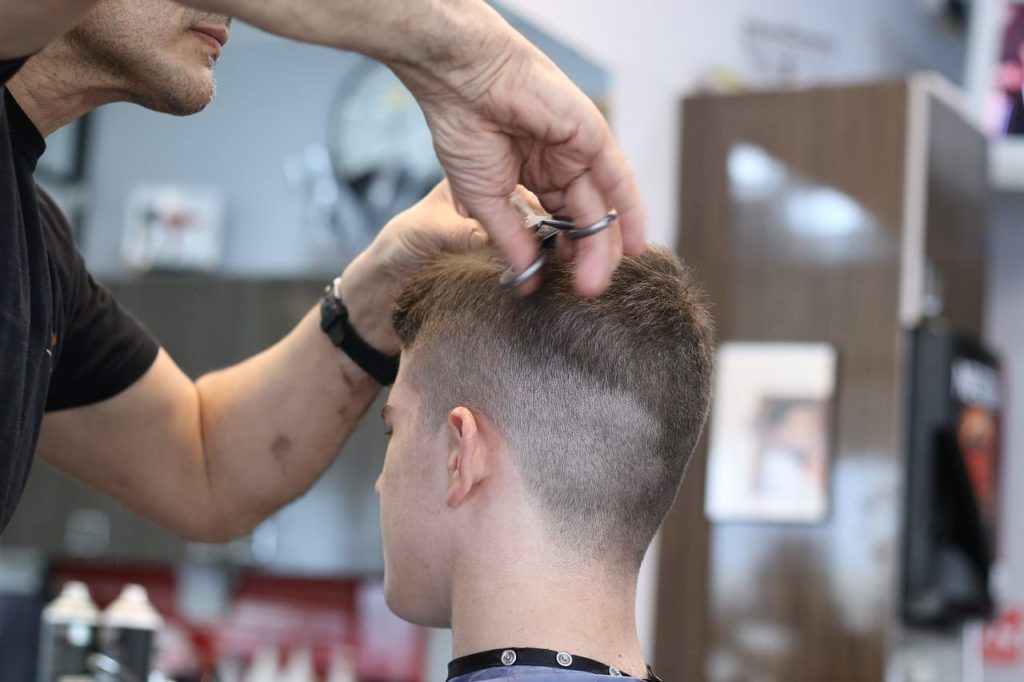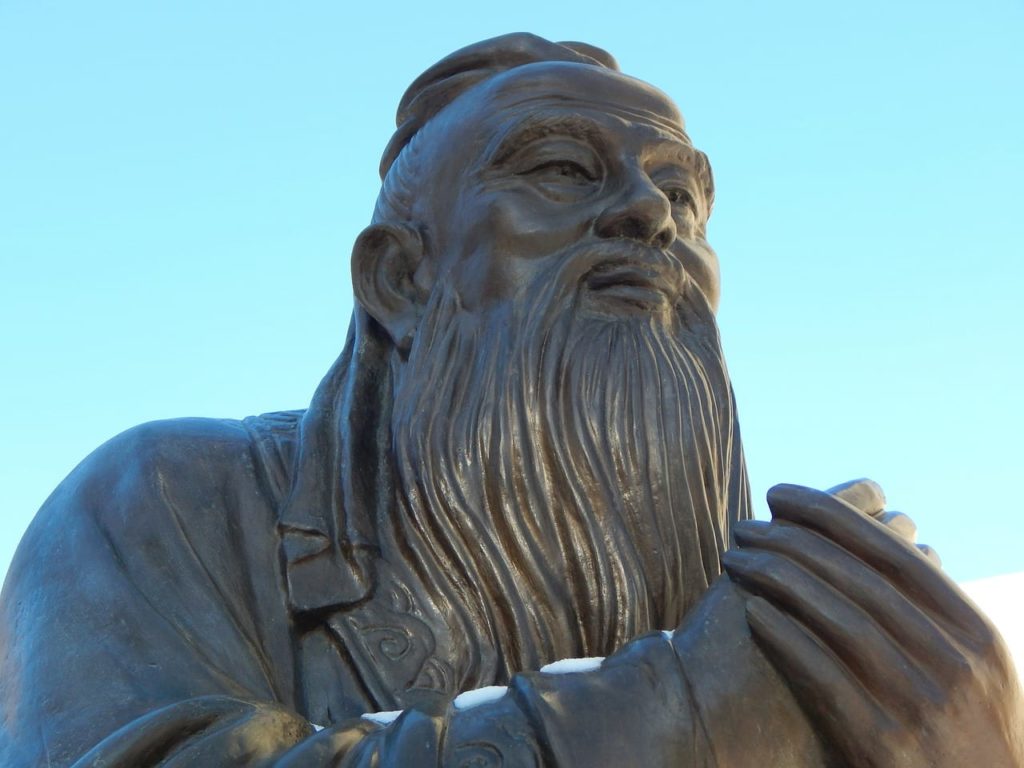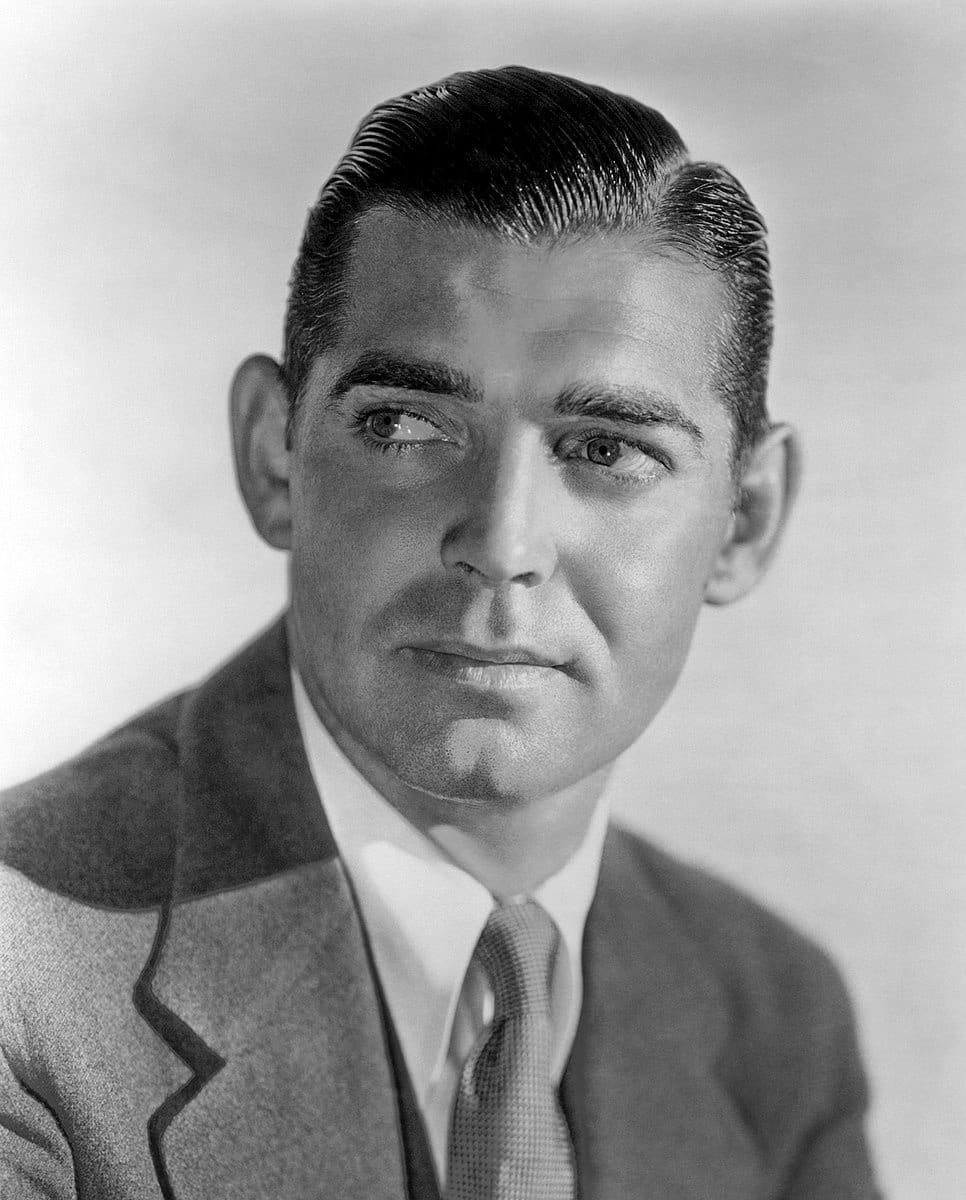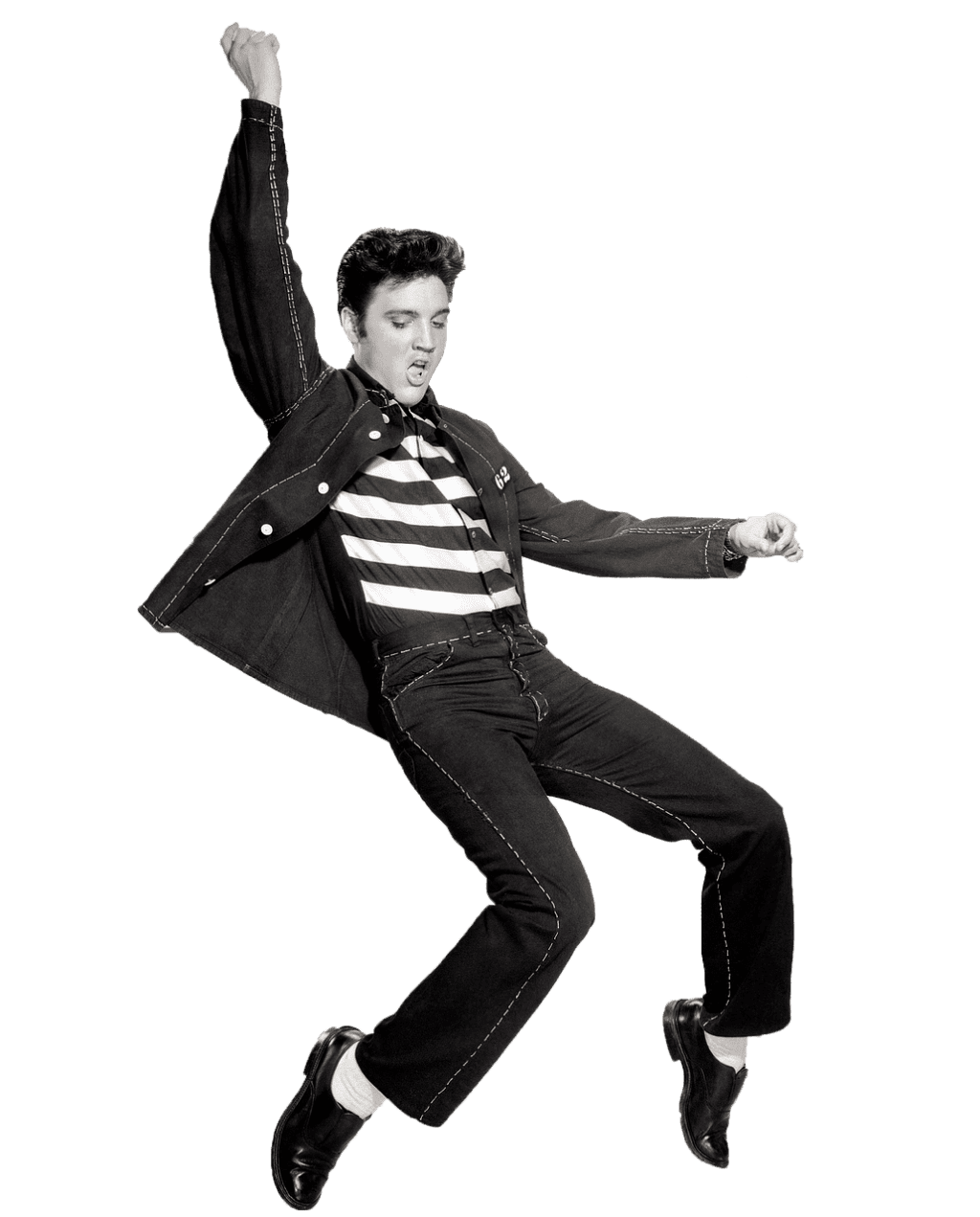No matter how far back in human history you go, there are some things that never change. One of those things is our interest in our hair. Men’s hairstyles and women’s hairstyles have always been important to us, and we still care deeply about our personal coifs.
Of course, speaking from an evolutionary perspective, the hair on our heads has a very specific purpose: to help us stay warm. No animals on the planet care about their hair (though Mrs. Morton’s poodle does sometimes seem a bit ashamed of his pink and purple haircut), yet humans care deeply about theirs.
We care so much about it that we’ve done some pretty crazy and interesting things with our hairstyles throughout the centuries. And while you would think that women are the ones most concerned about their hair, and there’s no denying they do care, it turns out that the evolution of men’s hairstyles is just as weird.
Why We Care
Sociologists have pondered the question of why we care about our hair so much ever since sociology became a scientific discipline. There are a couple theories, and here are some of the most likely:
It’s About Breeding
The thicker and more lush the hair, the more likely the person is healthy. This is crucial for child-bearing, of course, so both men and women can’t help caring about their hair for the signals it sends to the opposite sex.
It’s About Self-Determination
You can’t make yourself taller or shorter. You can’t fix your funny shaped ears or (until very recently) get different colored eyes or a better nose. You can’t change your skin color, and it’s even difficult to change the blemishes on our skin.
What you can change is your clothes and your hair. Constantly changing up your hairstyle is a way of signaling self-determination.

It’s About Social Cues
We’re social animals, and we care what other people think about us. We care about what “club” we belong to. We need to signal where we belong, and we do it in part with our hair. Men’s hairstyles are a way for males to show that they are male (and the same goes for women).
But there’s more to it than that. The specific hairstyle any man or woman chooses also identifies their group within the group. So while it’s about self, it’s also about belonging and conformity.
Ancient Hair
We know a lot about the general men’s hairstyles in the ancient world, though in the absence of photography and film it’s hard to get more specific. Most of our clues come from paintings, sculpture, and descriptions.
Ancient Egyptians
Men in Egypt tended to either shaved their heads or wore their hair very short. That’s because the ideal was to wear an elaborate wig or hair extensions, and the wealthier you were, the crazier your wig would be.
Only a country bumpkin or a peasant would be caught running around with something as uncouth as his own hair, so men’s hairstyles stayed very short to facilitate wigs and help with the lice problem. This habit really didn’t change at all through the whole 3,000 years of Egypt’s ascendance as a kingdom.

This sculpture demonstrates a typical Ancient Egyptian male hairstyle. Image CC by 3.0, bequeathed to by via
Ancient China
China, another ancient kingdom, valued hair highly. Hair was seen as a natural part of the body and therefore something to be cherished, so both women’s and men’s hairstyles were long. Having your hair shaved off was a punishment, and this punishment was regularly inflicted on “sinners” and criminals. The Han people groups of China tended to bind their long hair up in order to distinguish themselves from the “barbarians” who let it all hang out.

Confucius, a Chinese philosopher, had a typical Ancient Chinese male hairstyle.
Ancient Greece
Greek men also took their hair pretty seriously. In Greece, long hair and beards were for men. Boys had to cut their hair short until they reached a certain age, and as their hair and beard grew these were seen as symbols of increased distinction and social advancement.
All that changed with Alexander the Great. He noticed that long hair and beards were a battle disadvantage (giving the enemy something to grab), so he ordered his soldiers to trim their locks.
There were four major men’s hairstyles in ancient Greece. The kepos was a bowl-cut, and only children and slaves wore their hair this way. The Krylon involved gathering all the hair up and pinning it to the forehead. The hectorean was for men with curly hair (or who could fix it to curl), and this was combed back. The theseid was a kind of proto-mullet.

This picture represents a typical Ancient Greece male hairstyle. Image CC by 4.0, by via
Ancient Rome
Roman men’s hairstyles changed dramatically over the years. The earliest Romans wore it long, like Greeks, but around 300BC barbers came into fashion. At that point, everyone wanted their hair short.
Romans despised balding men, and Julius Caesar is believed to have worn his laurel crown constantly in order to hide his. In general, whatever hairstyle the Emperor of the moment adopted would quickly spread throughout the kingdom. Julius Caesar kept his short, but when Nero wore his long and with face-framing curls, the Romans started using heated curling tongs so everyone could look like Nero.

Here is a statue of Emperor Nero. Image CC by 2,5, by via
Later, Nero went for sideburns, so those became the fashion. Constantine loved wigs of various colors with the hair carefully arranged and heavily perfumed. All the men who could afford to follow him in this copied the fashion.
Medieval Hair
We’re defining our timelines a bit loosely, but once we move out of ancient times, men’s hairstyles got possibly even stranger. In general, we get a lot of bouncing back and forth between short and long styles, with occasional diversions into the world of wigs.
Europe
Once the Roman Empire fell, European men’s hairstyles were based on Germanic preferences. In general, the upper classes and royalty kept their hair long. Lower class men and slaves had to wear their hair short or shave their heads.
China
During this period, over in China, men began ordering their hairdressers to arrange their coif into elaborate ornamental shapes. The more interesting and elaborate the shape, the wealthier the wearer.
Maya
In the latter years of the Mayan civilization, men wore their hair long if they were elite and short if they were lower class. Men’s hairstyles dictated burning off the hair of their fringe. They did this to force a receding hairline, and the burning actually destroyed the hair follicles.
This gave them a higher forehead and a more elongated profile: something the Mayans felt was extremely beautiful. If you were a warrior, you wore your hair in a tuft to the left until you made your first kill, at which point you moved it to the right to celebrate your triumph.
Africa
Africa is a continent, not one civilization, but we have less information about ancient men’s hairstyles from here than we do from other places. We do know that most African civilizations saw hair as extremely important. Being at the top of the body, it was closest to the divine. If you could get the hair of your enemy, you could use it to mix a potion to injure him.
Men’s hairstyles could vary dramatically because they were an important way of sending messages. A man’s hair told everyone his age, tribal identity, marital status, religion, rank in the community, and success as a warrior. This was part of what led to the development of elaborate shapes and stylings not seen in other cultures.
Iconic (and Unusual) Men’s hairstyles in History
There is no end to the unusual hairstyles sported by both men and women throughout history, but some are more readily identifiable than others. Here are some of the weirdest hairstyles men have ever passionately followed:
The Powdered Wig, or Peruke

Here’s a painting of Louis XIV by via .
It was King Louis XIV, the Sun King, who set Europe on the fad of powdered wigs they wouldn’t be rescued from for almost two hundred years. Louis wore a long, brown wig of loose waves, and, naturally, every man in the kingdom followed suit as he could. Of course, the only reason Louis did this was because he didn’t want people to notice he was prematurely bald.
What’s the Matter with Bald?
Today we don’t mind balding quite as much as they did back then. Some men deliberately shave off all their hair, and it can be seen as a sign of maturity and distinction in older men. So what was the deal in 17th century Europe?

So what was the big deal? Syphilis. Syphilis was the deal. This sexually transmitted disease, without antibiotic treatment, causes rashes, blindness, dementia, and hair loss. Unless you were King George (who used to go around whispering “peacock” to himself), your dementia wouldn’t always show itself til late, and rashes could be covered up. Baldness, though, was hard to hide.
If you went bald back in the day, your reputation was tanked, so men tried to hide the problem with wigs. There wasn’t enough human hair to go around for all these wigs, so wigmakers started making them from horse and goat hair.
Why Powder?
Horse and goat hair don’t…smell so good. To cover this, people would throw powders scented with lavender and orange oil all over their wigs. Thus we get the powdered wig. Wearing a wig was a sort of blatant attempt to disguise your disease, so it didn’t REALLY catch on until King Louis.
Once Louis got himself a beautiful, classy wig, his cousin King Charles II of England followed suit. Once the royals were wigged up, wearing a powdered wig went from questionable to fashionable in very short order. You didn’t even have to have syphilis to wear one anymore!
Within 50 years, an average powdered wig cost a whole week’s wages in London. The really nice ones cost nearly thirty times that price. If you’ve ever heard the term “bigwig,” you might now be able to guess that the term originated as a way of referring to the important men who wore them.
The Chonmage
This is the term for the iconic “ponytail” you see on today’s Japanese sumo wrestlers and which you might also recognize from paintings and photos of ancient Japanese men. The hairstyle originates with the samurai.
The samurai are renowned today as warriors, but what isn’t as well known is that they were also the upper-class nobility. Thus, what they did influenced everyone’s fashion choices. The samurai originally started wearing their hair in these bun-like ponytails specifically to keep their helmets on during battle. Once again, the fashion of the upper class affected the rest, and soon it became fashionable for every Japanese boy to wear the topknot once he came of age.
Not Like the Movies
If you’ve watched any samurai moves lately, you’ll notice that they frequently depict the baddest samurai in the extremity of battle, full of determination, sweaty, and allowing their hair to hang a bit loose in a very (modern) manly fashion.
In reality, no samurai would ever do that. Having even one hair out of place was a disgrace to a Japanese warrior–so much so that poets would describe a man as having messy hair as a shorthand way of saying he was an utter disgrace.
Samurai oiled their hair and carefully tucked it up. While it might fall down in battle, it would immediately be restored when the battle was over. Only defeated warriors left their hair messy or loose as a sign of their humiliation.
The Ginger Revolution
For centuries, “civilized people” from all around the European and Roman world had seen red hair as the mark of a barbarian. In Britain, wild Scots and crazy Irishmen had red hair, and literature of the day points to the prevalence of red hair among those people as “proof” that they came from the “barbarous Scythians” of old. Staid and noble Englishmen rejoiced in their dark locks; until Queen Elizabeth I.

This photo depicts a young barbarian. Image CC by 3.0, by via
Queen Elizabeth
Queen Elizabeth I of England had red hair, and she wanted people to notice it. Her red hair helped disprove the charges that she was an illegitimate daughter of the previous king. It also set her apart as devoted to St. George, the patron saint of England, and helped to establish her personal “brand,” if you will. She even went so far as to dye the tails of her horses red.
What does this have to do with men’s hairstyles? Well, what the queen starts the nobles will finish, and soon all the fawning courtiers of Elizabeth’s empire were dying their hair and beards red in mimicry of their queen. The fad became so popular than English men were actually poisoning themselves in the process. They used saltpeter, saffron powder, sulfur powder, and borax to get the coveted color, and they suffering nausea, nosebleeds, and headaches for their dedication to fashion.
The Queue
No talk of ancient China is completely without reference to the long braided ponytail known as the queue. Starting well before the Qing Dynasty, Chinese men got in the habit of combing their hair as far backward as it would go, shaving their foreheads, and then braiding the rest into as long a queue as they could manage.
That in itself isn’t all that unusual (it certainly looks better than the worst 1980s mullets), but the history behind it is very unusual. The style at first was a fashion choice, and it was primarily men of the Han people group were very proud of the length of their queues.
Dynastic Changes
The rulers at the time, under the Ming Dynasty, were Manchu, not Han. The Manchu men didn’t particularly favor the queue; but when the Qing Dynasty overthrew the Ming, and the Han were installed as the upper class once more, the Emperor passed a law requiring all men to wear a queue.
As the law went, “keep your hair and lose your head, or keep your head and cut your hair.” (In this case, the cutting referred to the act of shaving the forehead all the way till it was in line with the ears.) The Emperor wanted to force men to publicly demonstrate their loyalty to him, and since barbers were also executioners, it only made sense for them to display the heads of lawbreakers in front of their establishments.
As a result, this hairstyle was the catalyst to a century or more of wars and rebellions, and the whole population did their dead level best to resist the order. Things went back and forth for a long time until the fashion finally started to die out in the time of the Republic.
Modern Men’s Hairstyles
Once we hit the 1920s, and the widespread use of photography and film, men’s hairstyles are a lot easier to follow. Yet the styles still continue to follow cultural trends, the whims of celebrities, and political movements. In general, men’s hairstyles tend to be more functional than fashionable, but things have never been that way universally.
The ’20s & ’30s
The Roaring 20s and Great Depression of the 30s saw men’s hairstyles go short, greasy, and parted. Men mostly went clean-shaved, and they usually wore their hair under hats. Beneath the head covering, though, most men’s hair was slicked back as tight as it would go and given a fierce center or side part.

Here’s a picture of Clark Gable, via
It was rare to see men with long hair, particularly as the fashion icons of the day, like Jimmy Stewart and Clark Gable, didn’t wear theirs long. All kinds of creams and pomades were invented to keep the hair slicked back tight. Names for these hairstyles included “helmet head” and “patent leather.”
The ’40s
The 40s were war years, and the military mandated very closely shaved buzz cuts, flat tops, and crews. These were easy to wash and maintain on the battlefield, made it easier to treat head wounds, and resisted the infestation of lice.

On the other hand, some men revolted against this fashion requirement and demanded longer and “wilder” hair. Thus the other fashion in the 40s was patterned after the short but wavy, side-parted coiffure sported by film idols Errol Flynn and Frank Sinatra.
The ’50s
By the 50s, men’s hairstyles were starting to rebel against the short cuts of the 20s, 30s, and 40s. It wouldn’t be until the 60s that we would see seriously long men’s hairstyles, but things were getting there.

Cultural icons like Elvis Presley and James Dean wore their hair high and quiffed, slightly mussed, wavy, and less severely sculpted. Some guys still wore crew cuts, but by the end of the decade those were dying out.
The ’60s
The 60s were a time of earth-shattering cultural rebellion, and men’s hairstyles were just one area where this became evident. The Beatles popularized the shaggy, long fringe once they rose to popularity. Men started to grow their sideburns out again (a fashion which had died out in the early 1900s).
By the end of the decade, the most fashionable men affected an androgynous look with long hair held back by headbands instead of covered with hats.
The ’70s
Long hair continued into the 70s, and now things were sharply divided into the “rebellious” and the “sensible.” Rockers and other men who wanted to “stick it to the man” wore their hair long, shaggy, or in dreadlocks in emulation of reggae stars and other cultures.
Men who wanted to go far in business or rule the world wore their hair short and sensibly. They began to eschew hairstyling agents like creams and started sporting a more natural look.
The ’80s
In the 80s, the long hairstyles of the 60s and 70s saw an unfortunate detour into what became known as the mullet. This short at the front long at the back hairstyle was all the rage for a while, and many middle-aged men today look back on their school photos from the time with a slight cringe of embarrassment.
In his blockbuster film Wall Street, actor Michael Douglas nearly single-handedly brought back short, slicked-back hair and rescued the world from the mullet. He has yet to receive an award for this achievement, but we can all hope that one day the world will recognize his contribution to men’s hairstyles.
The ’90s
You can only be “rebellious” if you’re reacting to something. Long hair had been in vogue for a couple decades by now, so the rebellious could no longer wear their hair long, obviously. They needed something else, and that something else became the Mohawk.
Begun in the late 80s, this style persisted into the 90s, especially among rockers. To achieve it, a man would shave the sides of his head and then spike (and sometimes dye) the middle. Fortunately, this style died down through the decade until we got the much more wearable modern faux-hawk.
Men’s Products
To achieve the perfect head of hair, you need the perfect set of tools. Here is the history of some of the most important products out there.
Combs
There has never been a time in human history where we didn’t use combs. Bone and ivory combs in China and Egypt, wooden combs dug out of the muck under London, and ancient wooden combs used by Masaai warriors have all been put on display in museums around the world. The comb is the first, most common, and possibly most useful hair tool humankind has ever invented.
Hair Gel
Men have tried to tame their locks with all kinds of products. They’ve used animal grease, , corn oil, and petroleum jelly in an effort to get their hair to do what they want. In 1929, a British company, who actually made pretty harsh kitchen cleaners normally, invented Brylcream. This set the standard for hair gel for years, and you have to admire the guts of the first men willing to put cream from chemical manufacturer on their heads.
Curling Iron
If you thought curling irons were for women, you’d be wrong. The first crimping tools of this sort were used by men in ancient Babylon and Assyria. They heated them over a fire and used them to style both their hair and their beards. The modern plug-in curling iron was patented in 1866 by the same guy who invented the Maxim machine gun. Go figure.
Extensions
Today, hair extensions are used primarily by women; but this wasn’t always the case. Egyptian men (and women) would sew in braids and pieces of hair made from human hair and dyed wool, attaching them with resin. European men of the 1700s also wore horse hair extensions and huge, beehive hairdos.
Men and Dyed Hair
People have been dying their hair for as long as we have any history. Even the Neanderthals used things to change the color of their hair. Gaul and Saxon warriors dyed their hair specific colors (often red and blue) in order to show their rank and fill their enemies with fear.
Rise of Blonde
The Egyptians, Greeks, and Romans, all used various types of plant and animal byproducts to color their hair, though most hair dye at the time was dark. It was harder to bleach hair, and only the rich could afford to lighten their hair through applying onion slices and sitting out in the sun for hours. The fact that only rich people could afford to lighten is part of the reason some people still associate lighter hair with beauty.
Red Barbarism
Red hair, which is actually a genetic code error, didn’t arise among human beings until the Middle Ages; and as such, it was always associated with witchcraft and barbarism until Queen Elizabeth I.
Pastel Wigs
In the 1700s and 1800s, the popularity of wigs made it possible for men to have hair in every color they wanted, so blue, pink, and yellow hair was popular through the upper classes of Europe. The first synthetic dyes came out in the 1800s, and though women used it more than men, there have always been men interested in dying their hair.
Men’s hairstyles and the Future
There’s no telling what the style will be for men in the future, but there’s a few things we know for sure. People will still see their hair as an important way to communicate something about who they are. People will still style their hair in imitation of their favorite celebrity or fashion fad.
And the comb will never fully go out of fashion.
The post appeared first on .





























